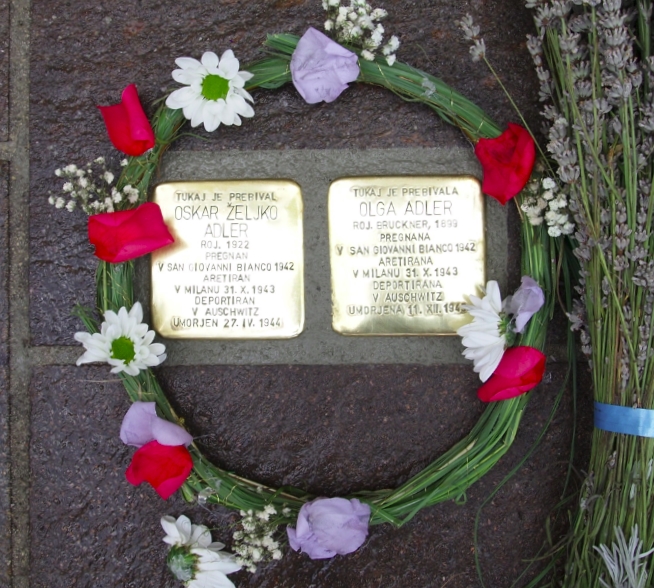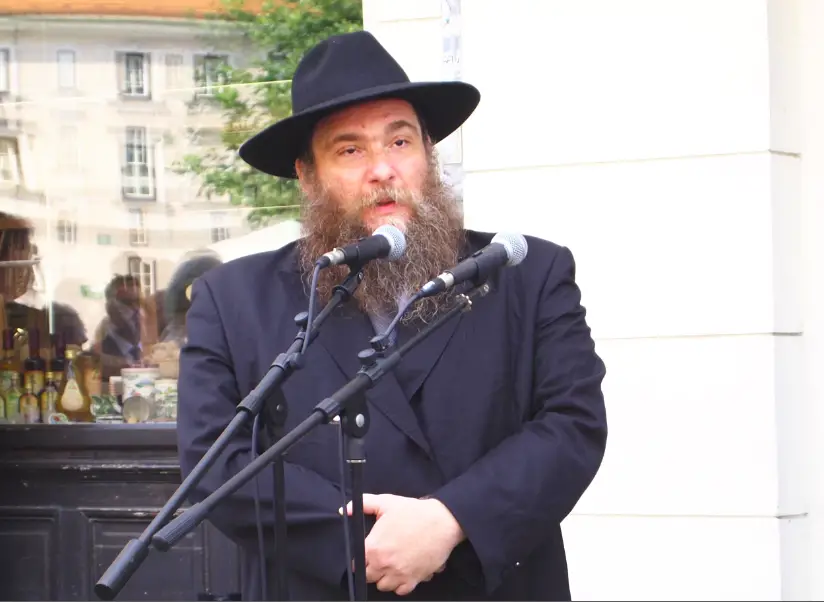August 6, 2018
Today saw the laying of the first Stolpersteine, or “stumbling stones”, in Ljubljana, set into the ground to mark Slovenian Jews who were killed in the Holocaust, outside the places where they are known to have lived. Stolpersteine are concrete cubes topped with a brass plate, each inscribed with the name and details of victims of Nazi persecution, created as part of a project started by the German artist Gunter Demnig in 1992, who was present for the occasion.

The artist Gunter Demnig being interviewed about the project
The day-long event, which saw 23 memorial stones being laid around town, was organised by the Jewish Cultural Centre (Judovski kulturni center), with the support of the City of Ljubljana, the Israeli Embassy, Mini Teater, ZRC SAZU, and a private donor, the Ljubljana businesswoman Marie Ann Prelog.
The locations of the first set of stones
Roughly 160 Jews lived in Ljubljana before World War II, with the number rising to about 1,000 as others fled areas controlled by fascists to the relative safety of Italian occupied Ljubljana. Two of these were Olga Adler and Oskar Željko Adler, who left Croatia and settled at Cankarjevo nabrežje 1, where the first two memorial stones were laid by President Pahor and Speaker Tonin. When the Italians surrendered and the Nazis took control they killed around 90% of the Jews in Slovenia, with the Adlers murdered in Auschwitz in 1944.
The actress Polona Vetrih read some poems
Isidoro Abramowicz, a Cantor from Stockholm, sang at the event
A total of 587 Slovenian Jews died in the Holocaust, destroying a community that had lived in the country for over a millennium, with archaeological evidence showing a Jewish presence in late Roman times. Moreover, with the end of War the new Communist regime did not welcome the Jews back, but instead continued their persecution, expelling them as “ethnic Germans” and confiscating their property.
Rabbi Ariel Haddid spoke at the event
The ceremony was attended by officials and dignitaries from the Jewish community, both in Slovenia and abroad, as well local officials such as President Borut Pahor and Parliamentary Speaker Matej Tonin.
As did President Pahor
President Pahor gave an impassioned speech in support of tolerance and against hate, urging people to listen to their own “alarm bells” when they rung at the signs of prejudice and exclusion, a matter all the more important with the return of fascism and open antisemitism in many parts of Europe. The Chief Rabbi of Slovenia, Ariel Haddid, spoke of the duty not to hate but also to never forget, adding that the victims being marked by the Stolpersteine were not only Jews but Slovenes, and thus part of the wider community.
President Pahor and Gunter Demnig laid the first stone
The head of the Jewish Cultural Centre, Robert Waltl, said that the event was important due to "recent attempts at Holocaust denial in Slovenia”, reminding attendees that putting names and stories to the numbers of those killed brought a deeper understanding of the Nazi’s crimes and the dangers of intolerance. To that end, for the last five years the names of all 587 Slovenian victims of the Holocaust have been read aloud at the ceremony marking International Holocaust Remembrance Day, January 27, an action that takes about 30 minutes.
Speaker Matej Tonin, Auschwitz survivor Erika Fürst, and President Pahor look at the stones

Never forget
As part of the Stolpersteine project visitors to Ljubljana can also see a number of posters around town over the next few weeks remembering Jewish Slovenian victims of the Holocaust, with their faces composed of letters of the Hebrew alphabet, in images produced by the artist Vuk Ćosić. You can see one of these below, and read more about the works here.

Enlarged details on either side of the poster













